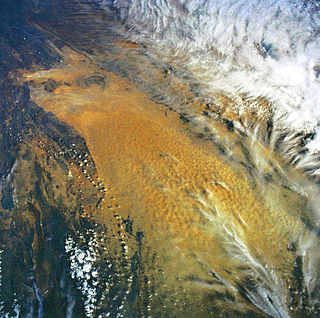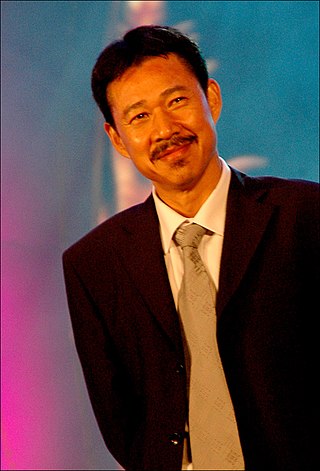
Friedrich Wilhelm Ludwig Leichhardt, known as Ludwig Leichhardt, was a German explorer and naturalist, most famous for his exploration of northern and central Australia.

Sylvia Alice Earle is an American marine biologist, oceanographer, explorer, author, and lecturer. She has been a National Geographic Explorer at Large since 1998. Earle was the first female chief scientist of the U.S. National Oceanic and Atmospheric Administration, and was named by Time Magazine as its first Hero for the Planet in 1998.

Sven Anders Hedin, KNO1kl RVO, was a Swedish geographer, topographer, explorer, photographer, travel writer and illustrator of his own works. During four expeditions to Central Asia, he made the Transhimalaya known in the West and located sources of the Brahmaputra, Indus and Sutlej Rivers. He also mapped lake Lop Nur, and the remains of cities, grave sites and the Great Wall of China in the deserts of the Tarim Basin. In his book Från pol till pol, Hedin describes a journey through Asia and Europe between the late 1880s and the early 1900s. While traveling, Hedin visited Turkey, the Caucasus, Tehran, Iraq, lands of the Kyrgyz people and the Russian Far East, India, China and Japan. The posthumous publication of his Central Asia Atlas marked the conclusion of his life's work.

Nikolay Mikhaylovich Przhevalsky was a Russian spy and a renowned explorer of Central and East Asia. Although he never reached his ultimate goal, the city of Lhasa in Tibet, he still travelled through regions then unknown to Westerners, such as northern Tibet, Amdo and Dzungaria. He contributed substantially to European knowledge of Central Asian geography.

Lop Nur or Lop Nor is a now largely dried-up salt lake formerly located within the Lop Depression in the eastern fringe of the Tarim Basin in the southeastern portion of the Xinjiang Autonomous Region, northwestern China, between the Taklamakan and Kumtag deserts. Administratively, the lake is in Lop Nur town, also known as Luozhong of Ruoqiang County, which in its turn is part of the Bayingolin Mongol Autonomous Prefecture.

The Lop Desert, or the Lop Depression, is a desert extending from Korla eastwards along the foot of the Kuruk-tagh to the former terminal Tarim Basin in the Xinjiang Uyghur Autonomous Region of China. It is an almost perfectly flat expanse with no topographic relief. Lake Bosten in the northwest lies at an altitude of 1,030 to 1,040 m, while the Lop Nur in the southeast is only 250 m lower.
The Desert of Hami is a section of the Gobi Desert in Xinjiang, China that occupies the space between the Tian Shan system on the north and the Nan-shan Mountains on the south, and is connected on the west with the Desert of Lop.

Loulan, also known as Kroraïna in native Gandhari documents or Krorän in later Uyghur, was an ancient kingdom based around an important oasis city along the Silk Road already known in the 2nd century BCE on the northeastern edge of the Lop Desert. The term Loulan is the Chinese transcription of the native name Kroraïna and is used to refer to the city near the brackish desert lake Lop Nur as well as the kingdom.

Zhang Fengyi is a Chinese actor best known for his role as "Duan Xiaolou" in Farewell My Concubine (1993), Jing Ke in The Emperor and the Assassin (1998), and Cao Cao in Red Cliff (2008–2009).

Xie Xide, also known as Hsi-teh Hsieh and as Hilda Hsieh, was a Chinese physicist. She was president of Fudan University from 1983 to 1989, and remained as advisor to the university from 1989 until her death. She helped to set up the university's Centre for American Studies and founded its Modern Physics Institute in 1977.
Charklik or Charkhlik is an archaeological site named after the town of Charkhlik (Qakilik), in Ruoqiang (Qakilik) County, Xinjiang Uyghur Autonomous Region of the People's Republic of China. Together with the nearby Miran site, they correspond to two ancient capitals of Shanshan, Wuni and Yixun. However, it is as yet unclear which site correspond to which capital.

Xiao Ke was a general of the Chinese People's Liberation Army, former vice chairman of the CPPCC, as well as principal of the University of Military and Politics.

The Gobi Desert is a large, cold desert and grassland region located in northern China and southern Mongolia. It is the sixth largest desert in the world. The name of the desert comes from the Mongolian word gobi, used to refer to all of the waterless regions in the Mongolian Plateau; in Chinese, gobi is used to refer to rocky, semi-deserts such as the Gobi itself rather than sandy deserts.

The Xiaohe Cemetery, also known as Ördek's Necropolis, is a Bronze Age site located in the west of Lop Nur, in Xinjiang, Western China. It contains about 330 tombs, about 160 of which were looted by grave robbers before archaeological research could be carried out.

Pierre Gabriel Édouard Bonvalot was a French explorer of Central Asia and Tibet. Bonvalot was born in the commune of Épagne in the Aube department in north-central France. He was the son of Pierre Bonvalot and Louise-Félicie, née Congniasse des Jardins. He attended schooling at Troyes.
Two Bombs, One Satellite was a nuclear weapon, intercontinental ballistic missile (ICBM), and artificial satellite development program by the People's Republic of China. China detonated its first fission and first thermonuclear weapons in 1964 and 1967 respectively, combined a nuclear weapon with a surface-to-surface missile in 1966, and successfully launched its first satellite in 1970.

Cao Tianqin, also known as Tien-chin Tsao, was a Chinese biochemist and a professor at the Shanghai Institute of Biochemistry. With a research focus on muscle protein, he discovered the myosin light chain and pioneered the study of tropomyosin and paramyosin using electron microscopes. He was a strong advocate and main leader for the synthesis of insulin, and spearheaded the research of plant viruses in China.

Zhang Youshang was a Chinese biochemist, professor and vice-president of the Shanghai Institute of Biochemistry and Cell Biology. He was a member of the Chinese Academy of Sciences and served as chief editor of the peer-reviewed journal Acta Biochimica et Biophysica Sinica (ABBS). His research was focused on protein structures and insulin.
Friedrich "Fritz" Ludwig Stammberger was a German mountaineer, skier, and explorer. He was a pioneer of mountain skiing and holds the record for the highest ski descent which he made down Cho Oyu mountain. Stammberger disappeared while scouting an expedition of Tirich Mir in Pakistan. His widow, Janice Pennington, published Husband, Lover, Spy after his disappearance with the help of her third husband Carlos de Abreu. The book claimed Stammberger was a spy working with the CIA and that ultimately led to his disappearance.















